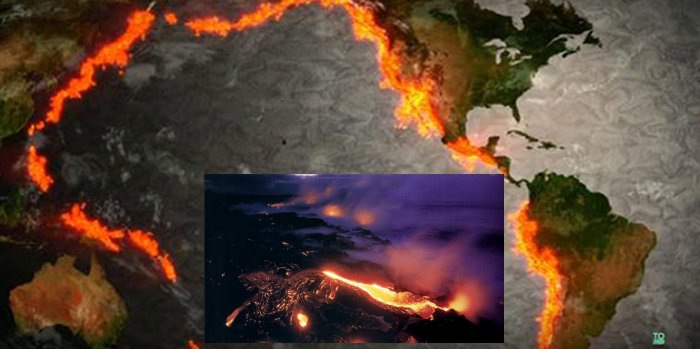Ring Of Fire With Powerful And Deadly Forces Lurking Deep Beneath Earth’s Surface
A. Sutherland – MessageToEagle.com – The Pacific Ocean is surrounded by a very dangerous zone composed of more than 450 active and dormant volcanoes, which are spread over 40,000 kilometers (25,000 miles).
Did you know that most of the active volcanoes on Earth are located underwater, along the Ring of Fire in the Pacific Ocean?
The Pacific Ring of Fire is different today than it was thousands of years ago because of the changes caused by tectonic plates.
The Ring of Fire – not a single geological structure – is not exactly a circular ring but it is more like a gigantic, horseshoe-shaped zone of danger that stretches along the coasts of New Zealand, Indonesia, the Philippines, Japan, Alaska, California, Mexico, Guatemala, Colombia and Peru, and the nearby ocean trenches.
Still, active volcanoes are also located in the western part of Antarctica.
Many of these volcanoes constantly threaten residents of nearby towns and villages. Moreover, the Ring of Fire area is also a zone of powerful earthquakes.
According to research 81 percent of the world’s largest earthquakes and 90 percent of the world’s earthquakes occur along the Ring of Fire.
Many Volcanoes In The Ring Of Fire
Gigantic huge slabs of the Earth’s crust (tectonic plates) move non-stop; they slide next to each other, they collide, move apart over a layer of partly molten and solid rock. The released energy results in volcano eruptions and earthquakes.
Many volcanoes in the Ring of Fire were created through a process of subduction. And most of the planet’s subduction zones happen to be located in the Ring of Fire. Image credit: Deutsche Welle
Unfortunately, most of this dangerous tectonic activity concentrates in the Ring of Fire, which is home to some of the most powerful and deadly forces lurking deep beneath the Earth’s surface.
North Island of New Zealand is located within the Ring of Fire. It is one of the world’s prime volcanic areas, where the most violent eruption – the Taupo eruption – occurred in 186 AD. No historical data exist and what is known about this cataclysmic event has been pieced together from geologic studies of the immense ash flow deposits of the area.
The Taupo eruption was the most violent eruption in the world in the last 5,000 years. There was no population at this time but if people lived on the island at the time, they didn’t survive to tell the story.
Popocatépetl is the most active volcano in Mexico, having had more than 15 major eruptions since the arrival of the Spanish in 1519.
Popocatépetl (the Aztec word for ‘smoking mountain’), which is one of Mexico’s most active volcanoes and one of the most dangerous volcanoes in the Ring of Fire, is located on the Trans-Mexican Volcanic Belt (locally also known as the Sierra Nevada), which covers central-southern Mexico.
In this belt, Popocatépetl is only one of several major volcanoes of Mexico.
Popocatépetl, towering to 5426 meters, had 15 recorded eruptions since 1519 and poses a risk to the more than 20 million people that live close enough to be threatened by a destructive eruption.
One of the most dangerous volcanoes in the Ring of Fire is Krakatau. It explodes much less frequently than other volcanoes, but each of Krakatau’s explosions is extremely dangerous and devastating.
This volcano was responsible for one of the most violent volcanic events in recorded history. In 1883, 165 villages and towns were destroyed near Krakatoa, and 132 were seriously damaged; at least 36,417 people died, and many more thousands were injured, mostly from the tsunamis that followed the explosion.
The eruption destroyed two-thirds of the whole island of Krakatoa!
Another danger related to the Ring of Fire, are underwater volcanoes.
Did you know that most of the active volcanoes on Earth are located underwater, along the Ring of Fire in the Pacific Ocean?
Volcanic eruptions and earthquakes in each part of the Ring of Fire occur independently of eruptions and earthquakes in the other parts of the Ring.
Most of Earth’s active volcanoes with summits above sea level are located in the Ring of Fire.
Approximately 850–1,000 volcanoes that have been active during the last 11,700 years
are located in the region of the Ring of Fire. The four largest volcanic eruptions on Earth in the last
11,700 years occurred at volcanoes in the Ring of Fire.
While volcanoes above the surface of the water are constantly being watched and scientists are able to anticipate the power of upcoming outbursts, many volcanoes on the ocean floor cannot be observed in the same way.
Still, most of the world’s volcanoes probably erupt under the oceans. However, many of them never break the ocean surface and therefore, only a small percentage of them are recorded.
We can hope that all these volcanoes will never start waking up, at the same time.
Written by – A. Sutherland AncientPages.com Staff Writer
Copyright © AncientPages.com All rights reserved. This material may not be published, broadcast, rewritten or redistributed in whole or part without the express written permission of AncientPages.com
Expand for referencesRelated Posts
-
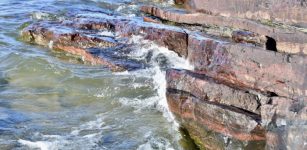 Rise Of Oxygen On Early Earth Sheds Light On Life On Other Planets
No Comments | Feb 1, 2022
Rise Of Oxygen On Early Earth Sheds Light On Life On Other Planets
No Comments | Feb 1, 2022 -
 The Bushido Code: Centuries-Old Unwritten Code For Ideal Samurai Warrior
No Comments | Dec 26, 2016
The Bushido Code: Centuries-Old Unwritten Code For Ideal Samurai Warrior
No Comments | Dec 26, 2016 -
 Messina Cathedral And Its Automated Astronomical Clock Tower
No Comments | Jan 14, 2016
Messina Cathedral And Its Automated Astronomical Clock Tower
No Comments | Jan 14, 2016 -
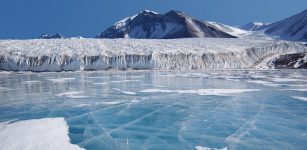 Giant Landforms As Tall As The Eiffel Tower Discovered Beneath Antarctica Ice Sheet
No Comments | May 12, 2017
Giant Landforms As Tall As The Eiffel Tower Discovered Beneath Antarctica Ice Sheet
No Comments | May 12, 2017 -
 Our Mind: Powerful Force That Influences Our Body, Life And Behavior
No Comments | May 25, 2017
Our Mind: Powerful Force That Influences Our Body, Life And Behavior
No Comments | May 25, 2017 -
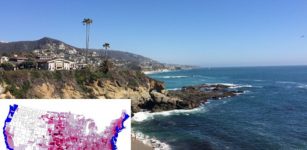 Sea Level Rise Will Affect Every County In The US And Trigger Migration Inland
No Comments | Jan 24, 2020
Sea Level Rise Will Affect Every County In The US And Trigger Migration Inland
No Comments | Jan 24, 2020 -
 Famous Philosopher Plato: One The Greatest Thinkers Of All Time With Special Interest In The Concept of Soul
No Comments | Sep 28, 2016
Famous Philosopher Plato: One The Greatest Thinkers Of All Time With Special Interest In The Concept of Soul
No Comments | Sep 28, 2016 -
 Incredible Padmanabhaswamy Temple And Its Ancient Treasures Hidden In Vaults Guarded By Serpents
No Comments | Jun 29, 2015
Incredible Padmanabhaswamy Temple And Its Ancient Treasures Hidden In Vaults Guarded By Serpents
No Comments | Jun 29, 2015 -
 Sverd I Fjell – Swords In Rock: Battle Of Hafrsfjord Won By Harald Fairhair – First King Of Norway
No Comments | Mar 9, 2016
Sverd I Fjell – Swords In Rock: Battle Of Hafrsfjord Won By Harald Fairhair – First King Of Norway
No Comments | Mar 9, 2016 -
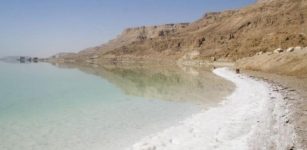 World’s Oldest Evidence Of Man-Made Climate Change Discovered In 11,500-Year-Old Samples From Dead Sea
No Comments | Jun 5, 2017
World’s Oldest Evidence Of Man-Made Climate Change Discovered In 11,500-Year-Old Samples From Dead Sea
No Comments | Jun 5, 2017

